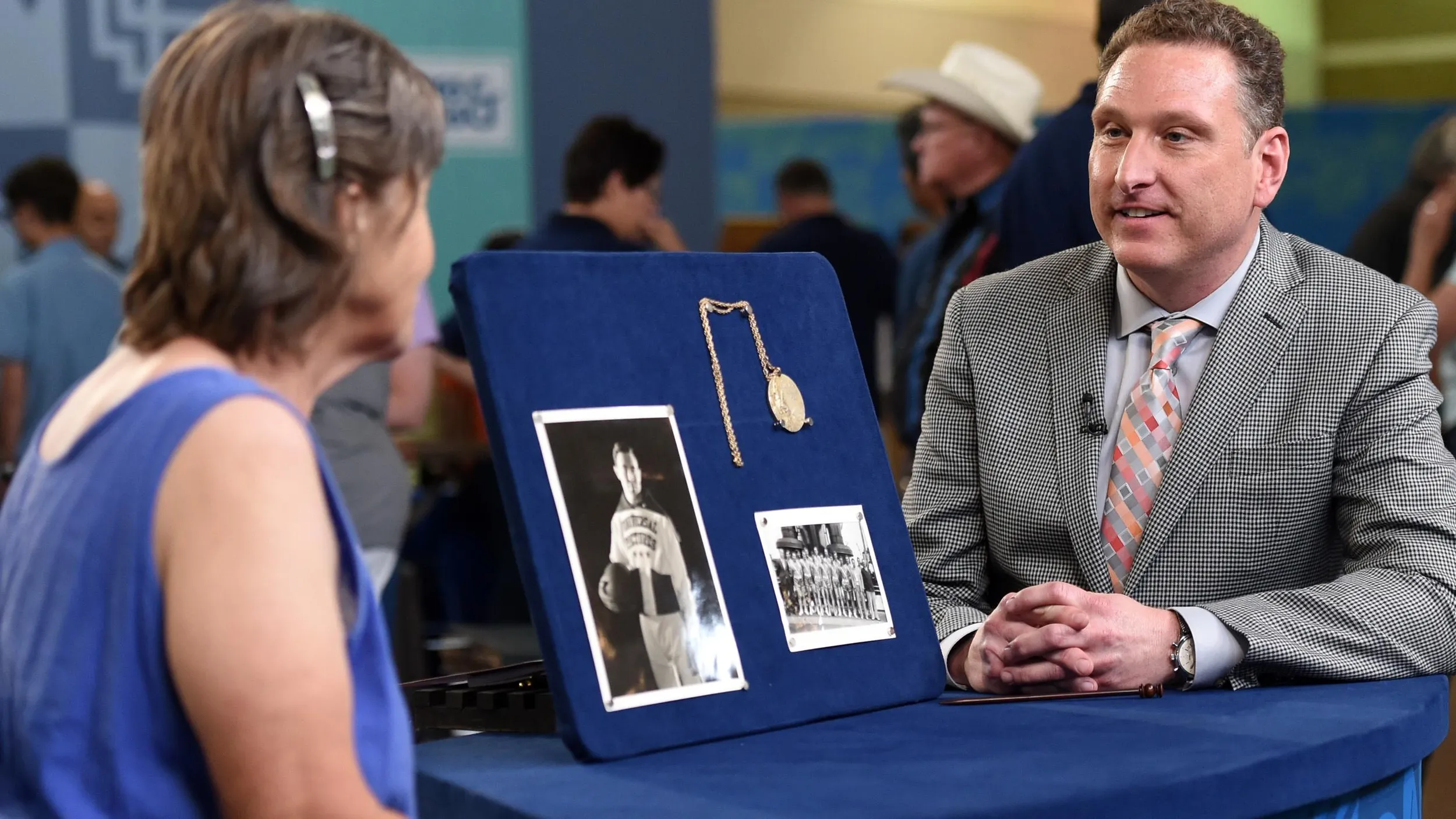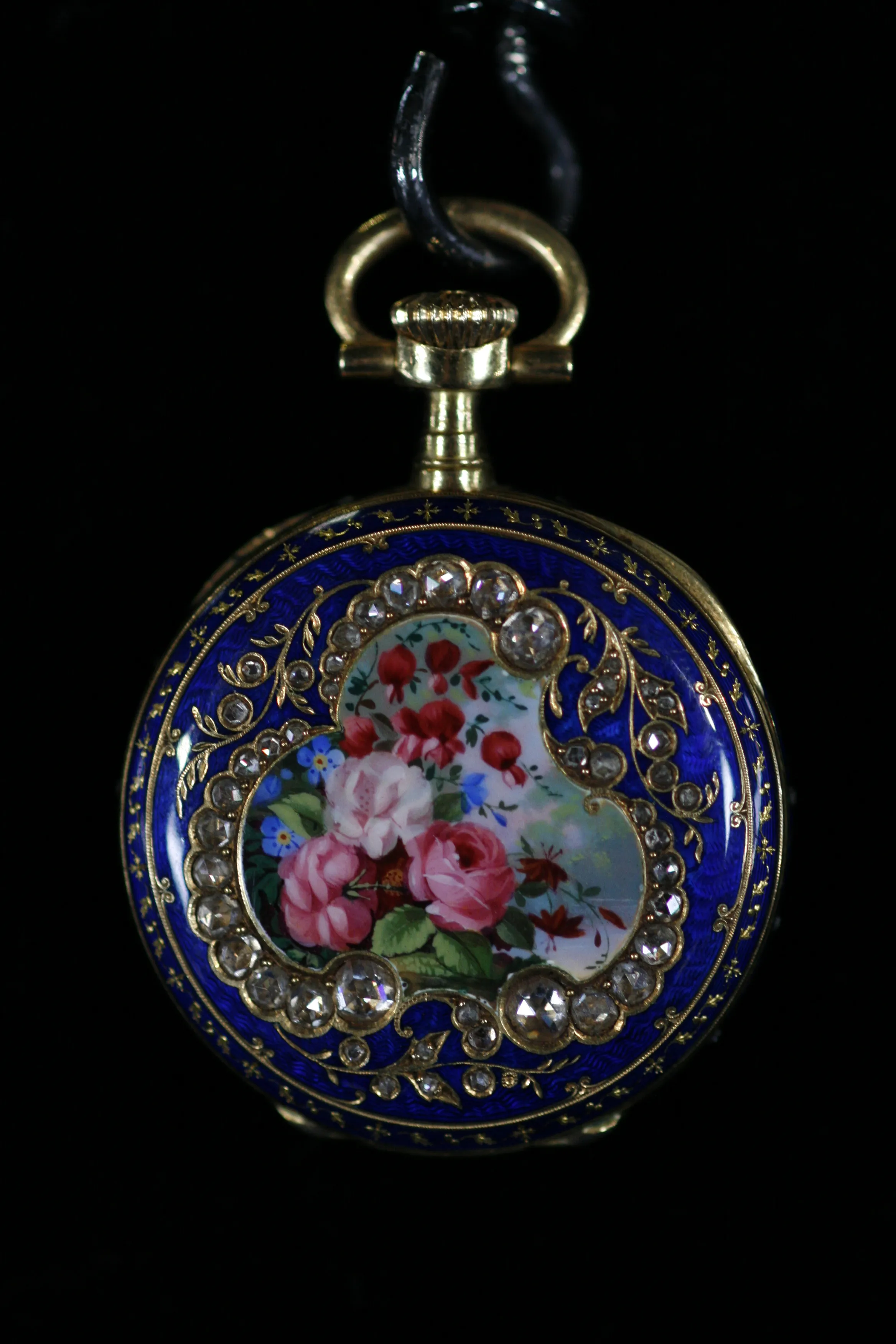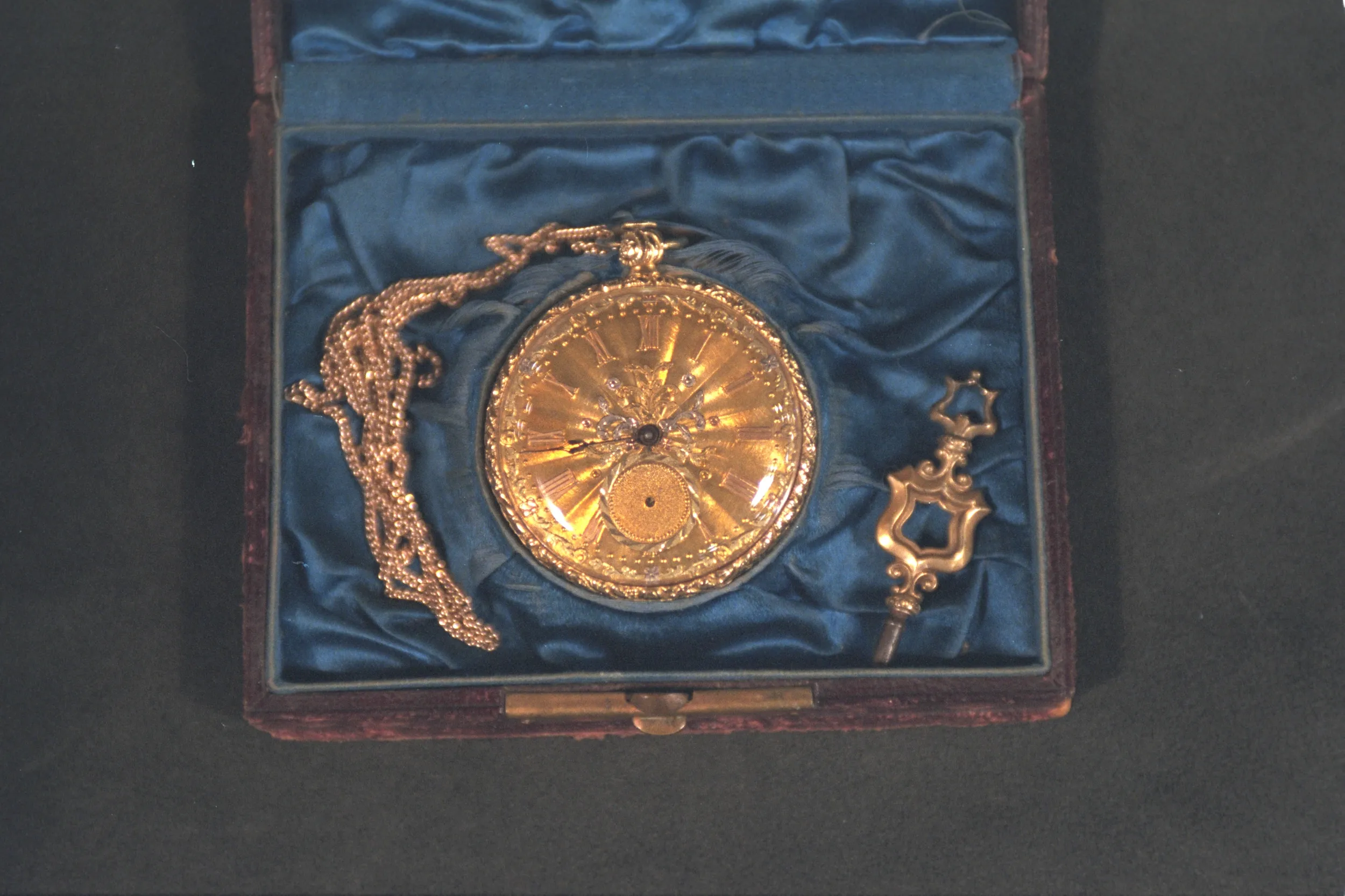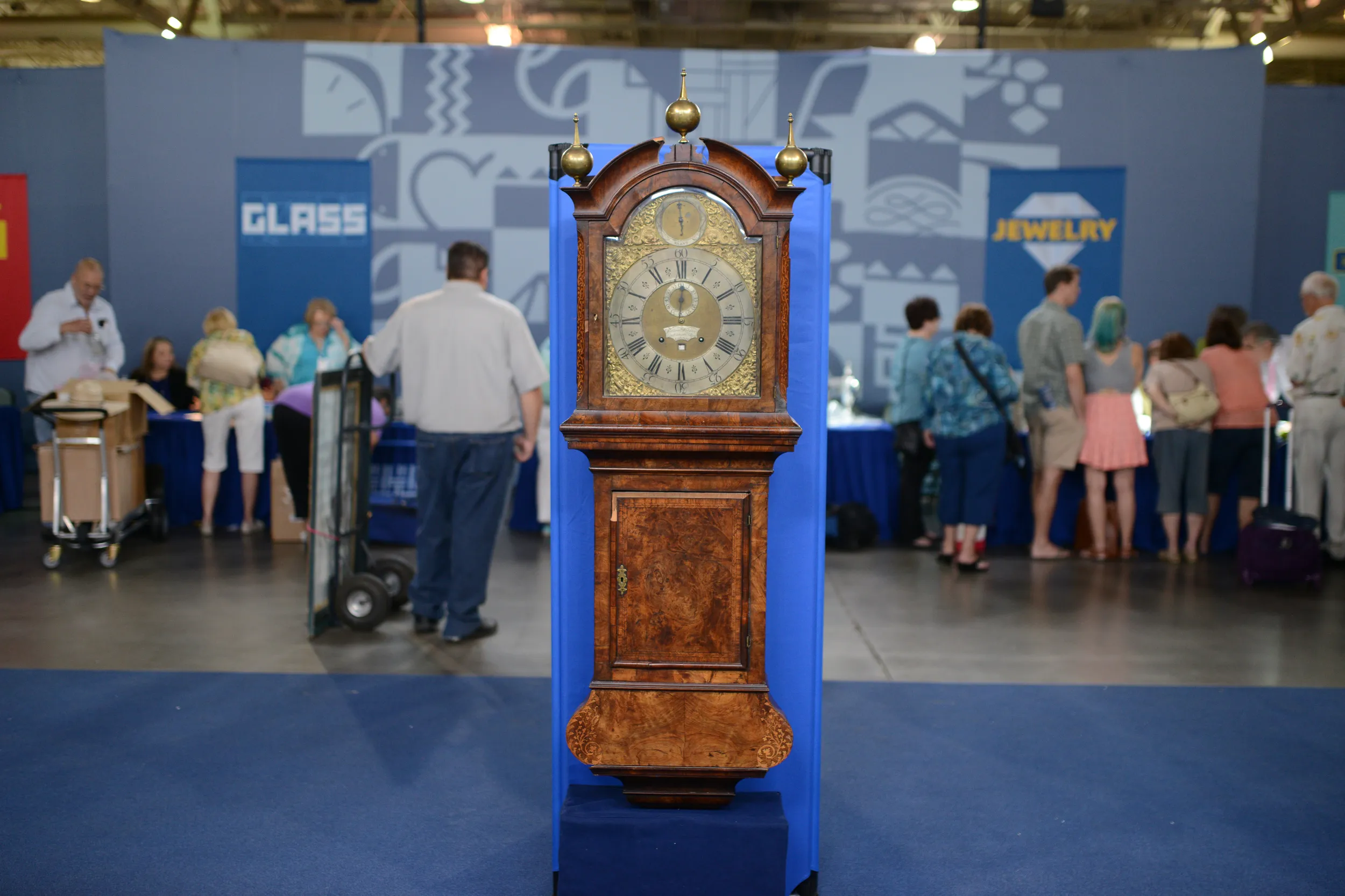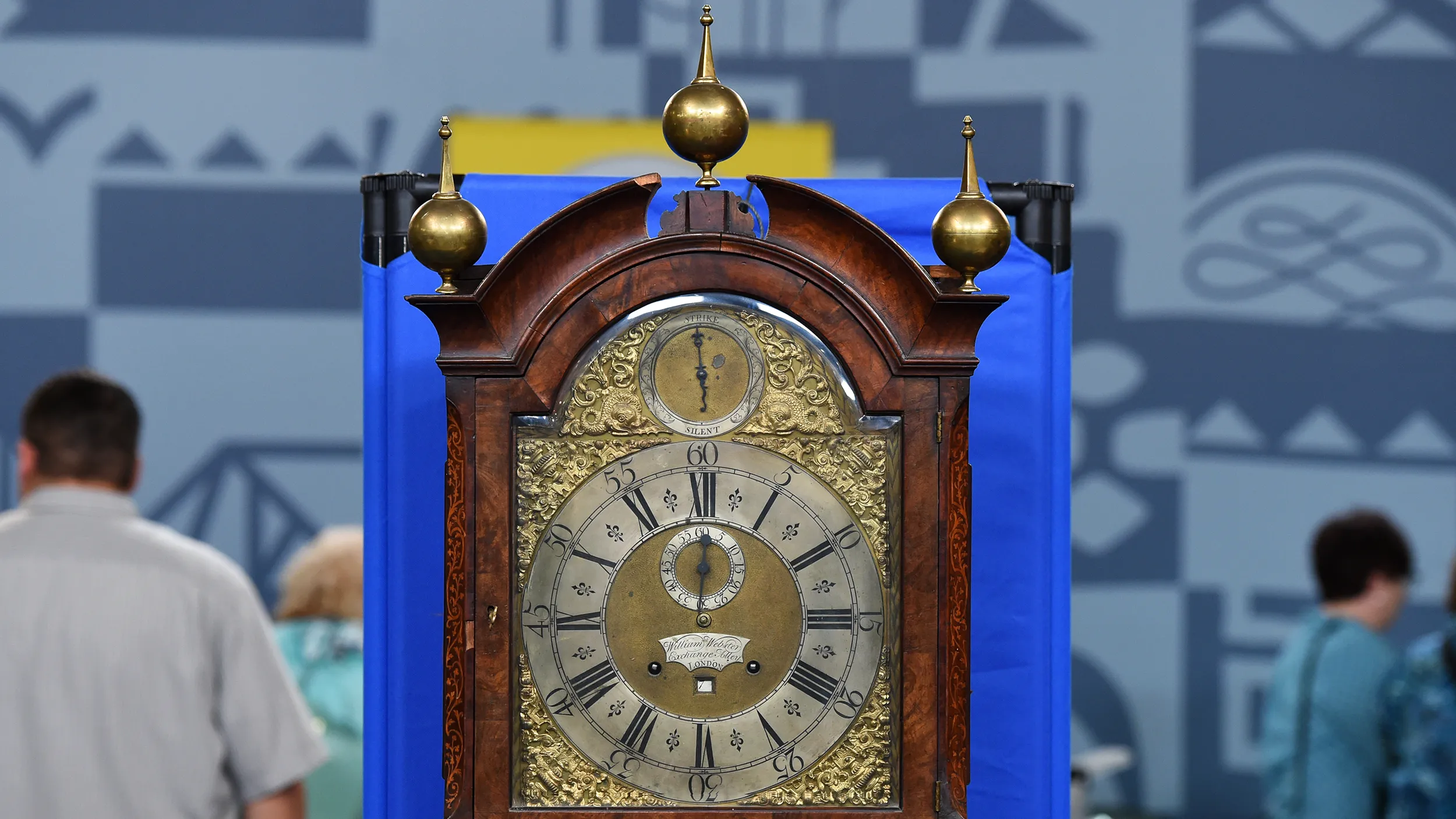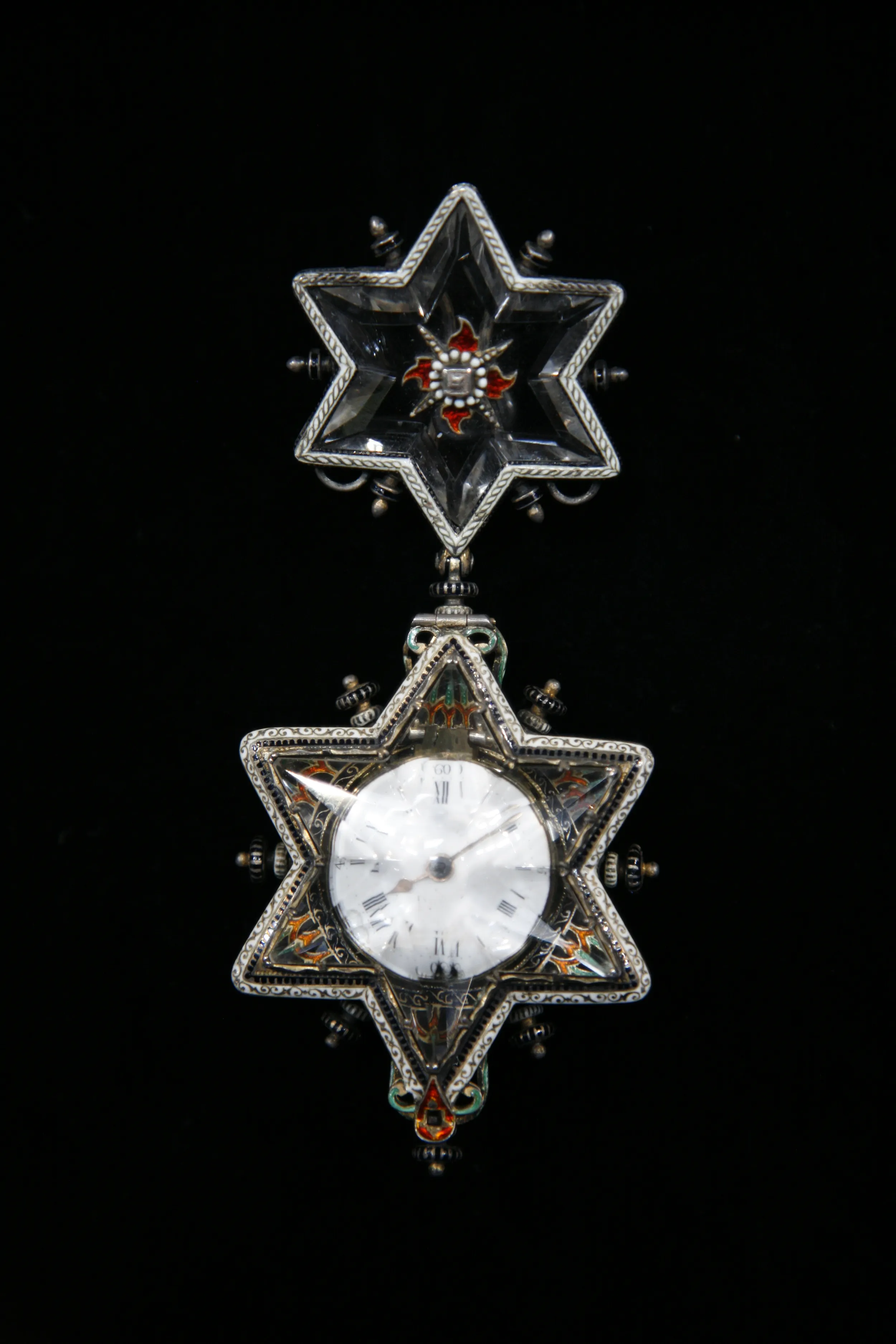GUEST: I've had this clock for about four years. I bought it from a friend of mine who was going to have a yard sale, and I took a look at the goods before he had the sale, and I bought it from him.
APPRAISER: And what did you pay for the clock?
GUEST: About a hundred bucks.
APPRAISER: And did you haggle with him on the $100?
GUEST: No, I knew it was well worth it.
APPRAISER: You knew it was well worth it? What did you like about the clock?
GUEST: Uh, just the wood, the pieces of wood, and how it went into the corner, actually.
APPRAISER: Yeah, it's unusual, it's a very interesting clock. It's something that I really haven't seen before, and it has a real "wow" factor, it's amazing. It's sort of a hybrid of a clock that was made probably to order. It's a combination of a tall clock dial here with this tombstone shaped dial and an English wall clock, that was made for the corner, to boot. This is signed here on this name plaque, "William Webster of London," and he worked in Exchange Alley. And now, there are two William Websters. There's the first William Webster that worked from 1710 to 1734, and then he had a son, William Webster II, that worked in the same location. Now, William Webster I was a journeyman to Thomas Tompion, which was London's most famous clockmaker, and anybody affiliated with Thomas Tompion is somebody of importance, really.
GUEST: Is it possible it was made by William Webster I?
APPRAISER: It could be, because this arch dial is something that comes into play right around 1730s. But more likely, I think it's mid-18th century, made by William Webster II. It's just an incredible clock made of burled walnut, and then it has these great features with this herringbone inlay that goes around the door and all these half-round moldings. And then it has this marquetry inlay down at the bottom, and then it's repeated on the chamfered edges. It has a wonderful broken arch top with these period brass, what we call ball-and-spike, finials. It has a great dial, it has a silver chaptering that's been applied, a strike silent feature, and these applied spandrels all the way around, which are of the period of mid-18th century. Also, the movement has what we call a five-posted movement, which is a very early feature. Most tall clock movements have four posts that hold the plates together. It has a few condition issues.
GUEST: Yes.
APPRAISER: Where you see these half-round moldings that are missing. There's a blind fret here on the side, that's missing. The cloth could be replaced.
GUEST: Okay.
APPRAISER: But really, not that big a deal. It's missing its hands. We could find hands that would be appropriate for it. In this present condition, I think it's worth $25,000.
GUEST: Oh my God.
APPRAISER: But I think if you were to research this a little bit more and prove that it was made by William Webster I, it could be between $30,000 and $35,000. Made by William Webster II, which I believe it to be, in a fully restored condition in a retail situation, we're talking around $30,000.
GUEST: That's great, I had no idea.

